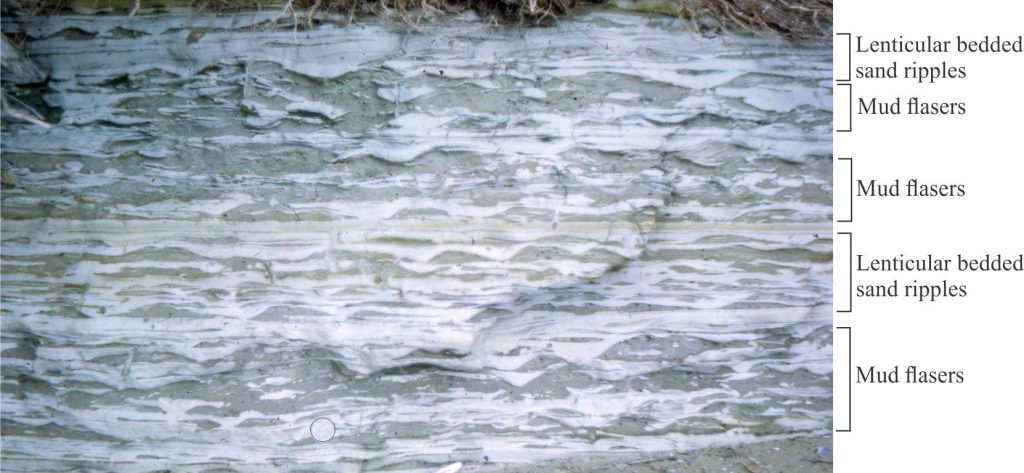
Lenticular bedding, flaser bedding, and interference ripples
Most crossbeds and their associated bedforms cannot be linked directly to specific environments of deposition. For example, planar and trough crossbeds form in marine, fluvial, and aeolian settings and pin-pointing any one of these usually requires additional information. Likewise, current ripples are ubiquitous in marine and terrestrial environments. However, a small group of ripple bedforms can, with some confidence, be associated directly with tidal currents, where bedforms react to tidal current asymmetry (the fancy name for ebb-flood reversal of tidal currents). The value of this association is enhanced when other sedimentary structures of shallow marine origin are present. Tidal currents interact with the sea floor on all continental shelves and platforms, but their most profound influence on sedimentation is in intertidal environments. Three of these bedforms are described here: lenticular and flaser ripple bedding, and interference ripples.
Use this link to read the introduction to the lithofacies series.
Flaser and lenticular bedded lithofacies
General occurrence:
Lenticular and flaser bedding are commonly found together. There is a complete gradation between the two types of bedding. They are best developed on mixed sand-mud tidal flats.
External form:
Reineck and Wunderlich (1968) provide a detailed description and classification of lenticular and flaser bedding – this is still one of the best sources of information. The term ‘lenticular’ derives from the ripple profile, where the lenticularity refers to lee face – stoss face symmetry. Lenticular bedding is characterized by sand ripples overlain by or encased in mudstone. Thus, ripples appear isolated, disconnected, or as locally connected bedforms. The proportion of mud in beds containing lenticular ripples is usually equal to or greater than that of sand.
Flaser bedding forms where the proportion of sand exceeds that of mud and is characterized by mud veneers or streaks that line or fill the troughs between successive ripples. The mud layers may overlap ripple crests.
Lenticular and flaser bedding form with both current and wave ripples. Thus, bedforms may have asymmetric or symmetric profiles, and crests that are straight, linguoid, or lunate.
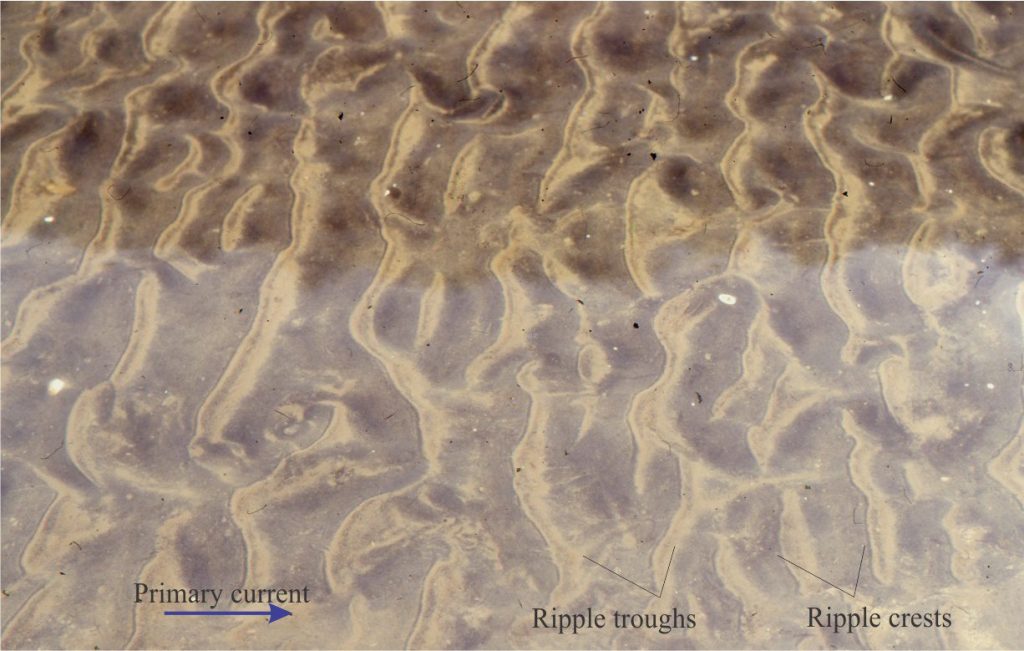
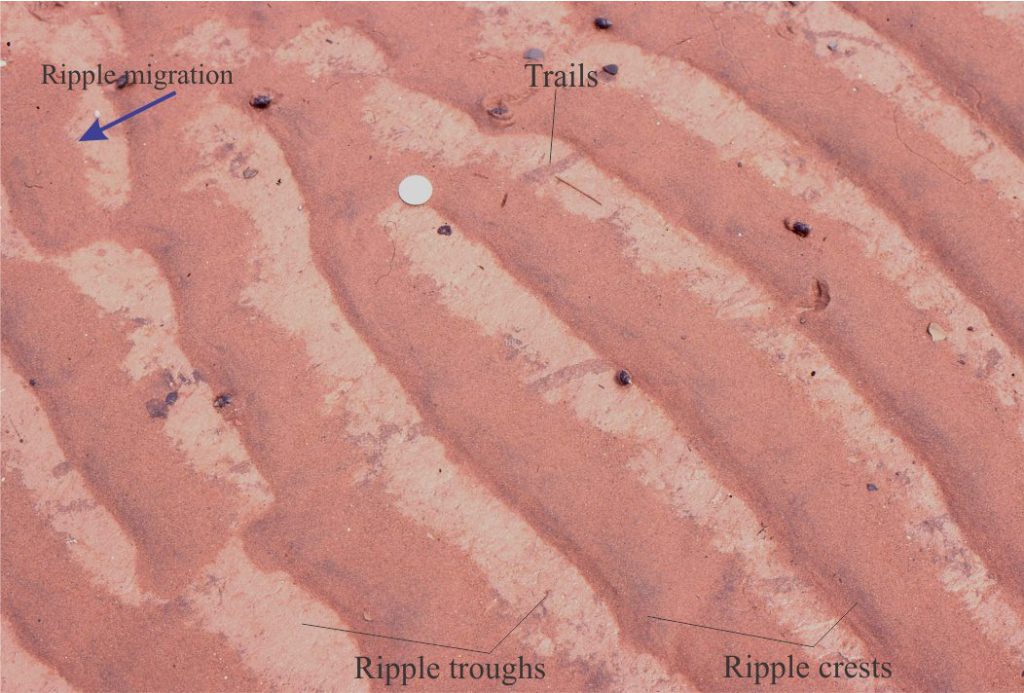
Internal structure:
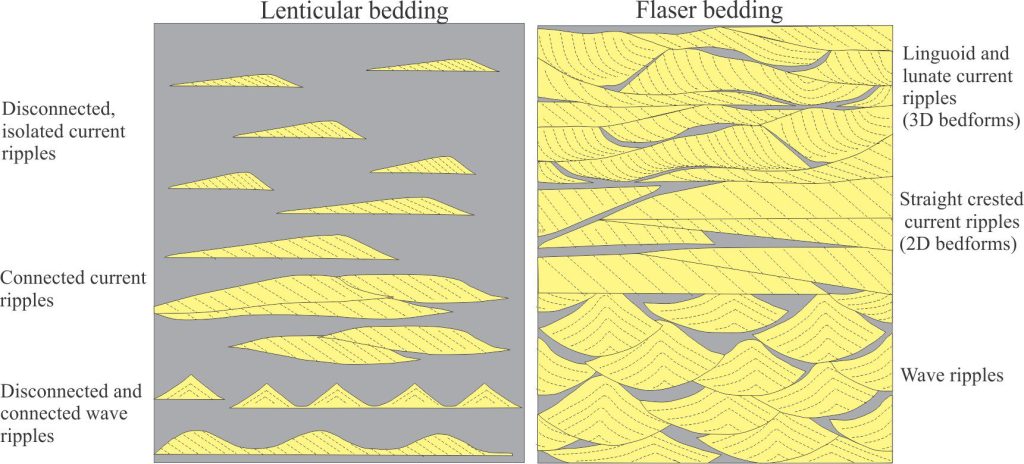
Current ripple bedforms in lenticular and flaser bedding contain typical lee-stoss face asymmetry, and foresets that dip downflow. Wave-generated bedforms are symmetrical and may contain opposing foresets, or foresets having a dominant dip direction depending on wave orbital geometry. Each ripple may be isolated or overlap (and partly erode) other ripple sets. Mud that drapes or encases lenticular ripples may be laminated and commonly contain discontinuous sand laminae. Bioturbation is common; there may also be macro- and microfossils.
Mud flasers are preserved as isolated, wispy veneers or lenses overlying or filling ripple troughs. Ripple cosets may contain several flasers.
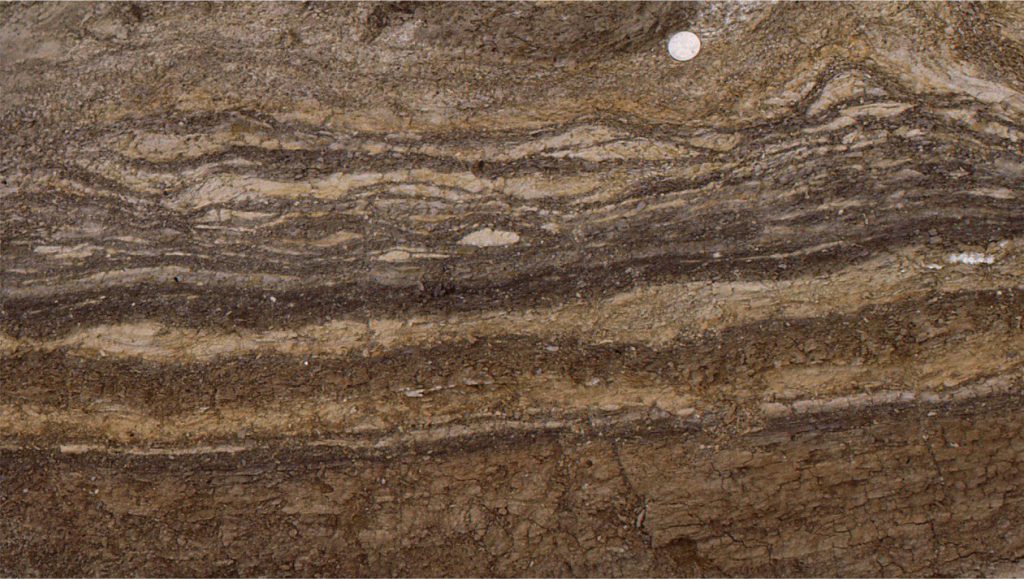
Formation – hydraulic conditions:
Lenticular bedding and the ripples overlapped by flaser bedding form in the same way as standard current and wave ripples. Their distinctiveness derives from an interaction with ebb and flood tidal currents. Both types of structure form when either the ebb or flood tidal currents dominate, with the mud layers accumulating during the opposite, much weaker flow.
Common environments
Both structures form on mixed sand-mud tidal flats in marine embayments, lagoons and estuaries that are subjected to tidal exchange. Note that neither bedform indicates which tidal flow was responsible for their development, but instead points to the relative strength or competence of either ebb or flood flows. The real value of the lithofacies lies in the stratigraphic repetition of the bedforms that indicate a degree of regularity or periodicity of opposing current strengths, a periodicity that is difficult to explain in depositional settings other than a tidal environment (current reversals can develop locally in fluvial and aeolian depositional settings, but there is rarely any periodicity to such events).
Interference ripple lithofacies
General occurrence:
Interference ripples occur when one bedform coset, formed during either flood or ebb tidal flow, is modified by ripples formed during the opposing tide. For ripple interference to occur the directions of current flow must be less than 180o such that the two sets of ripple crests are oblique.
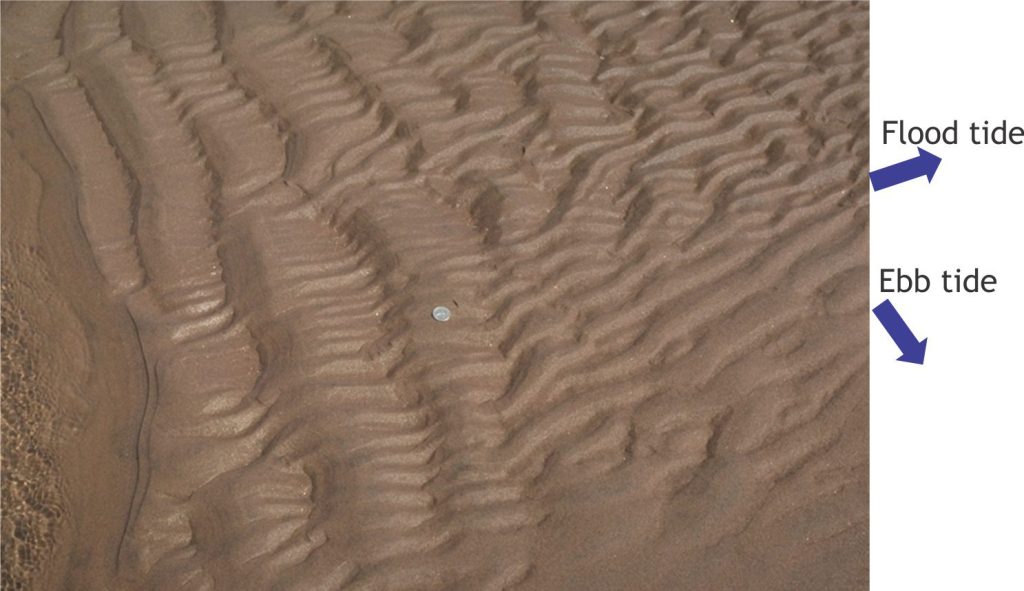
External form:
Each ripple coset is formed by currents and hence will usually show lee – stoss face asymmetry. However, the first-formed ripples will also be modified – typically crests will be rounded or flattened by the opposing tidal flow. In addition, the crest lines of earlier-formed ripples will be dissected in a fairly regular fashion by the latest ripple coset.
Interference ripple patterns are more easily identified in straight crested bedforms than in 3D bedforms such as linguoid ripples. Exposure of both ripple sets on bedding is necessary for confident identification.
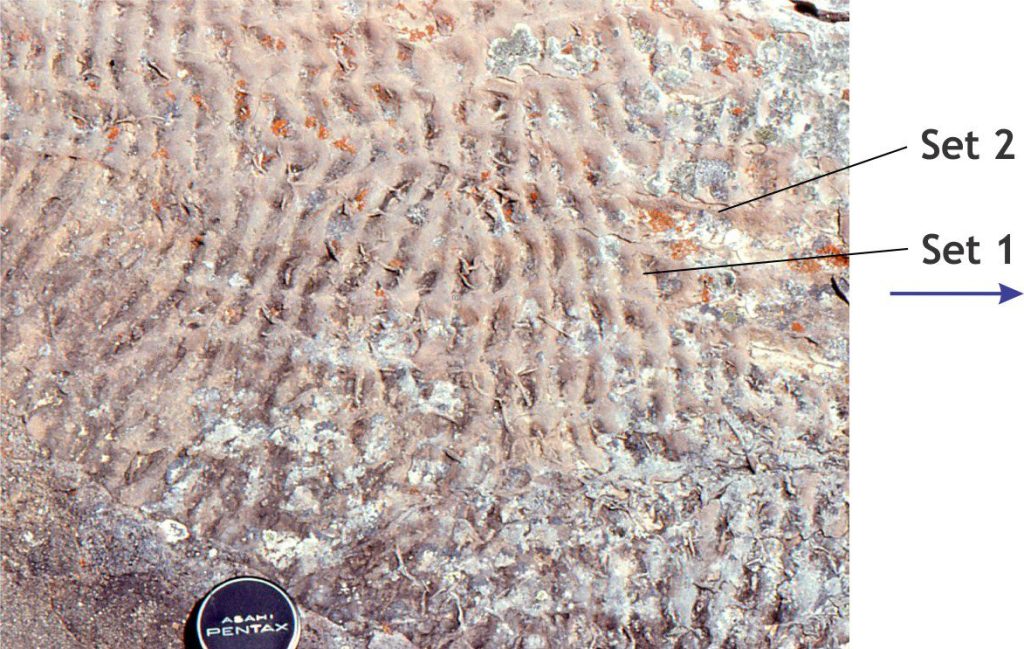
Internal structure:
Ripple foresets will show lee-face preservation typical of most current ripples. In profile views there is little to distinguish interference ripples from other ripple types; bedding exposure is usually a prerequisite for positive identification.
Formation – hydraulic conditions:
The hydraulic conditions necessary for current ripples to form apply to both ripple cosets (see the companion post on current ripple formation). The change in direction of ripple migration is a function of the degree of asymmetry of opposing tidal flows.
Common environments:
Interference ripples are valuable indicators of tidal current asymmetry over tidal flats associated with lagoons, estuaries, and coastal embayments, particularly if they occur with lenticular and flaser bedding. Interference ripples will not form if the flood-ebb flow directions are directly opposite (i.e., 180o). They are more likely to form where ebb flow is deflected, for example by the formation of larger bedforms over the tidal flat, or by wind shear that pushes the shallow water masses in different directions (for example, during storm surges).
Neither ripple set can be equated with an ebb or flood tide. However, if the strike of a paleoshoreline can be determined from independent data, then it may be possible to assign ebb or flood status to a particular ripple set.
Other posts in the Lithofacies series
Sedimentary lithofacies – An introduction
Ripple lithofacies: Ubiquitous bedforms
Tabular and trough crossbedded lithofacies
Laminated sandstone lithofacies
Low-angle crossbedded sandstone
Hummocky and swaley cross-stratification
Subaqueous dunes influenced by tides
Other posts that provide useful background information on bedforms and processes include:
Crossbedding – some common terminology
Sediment transport: Bedload and suspension load
Fluid flow: Froude and Reynolds numbers
The hydraulics of sedimentation: Flow Regime
Lithofacies beyond supercritical antidunes
Introducing coarse-grained lithofacies

















